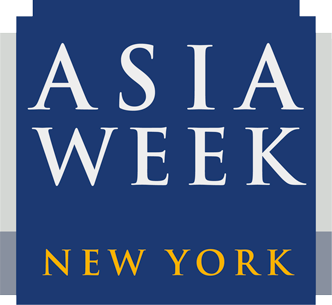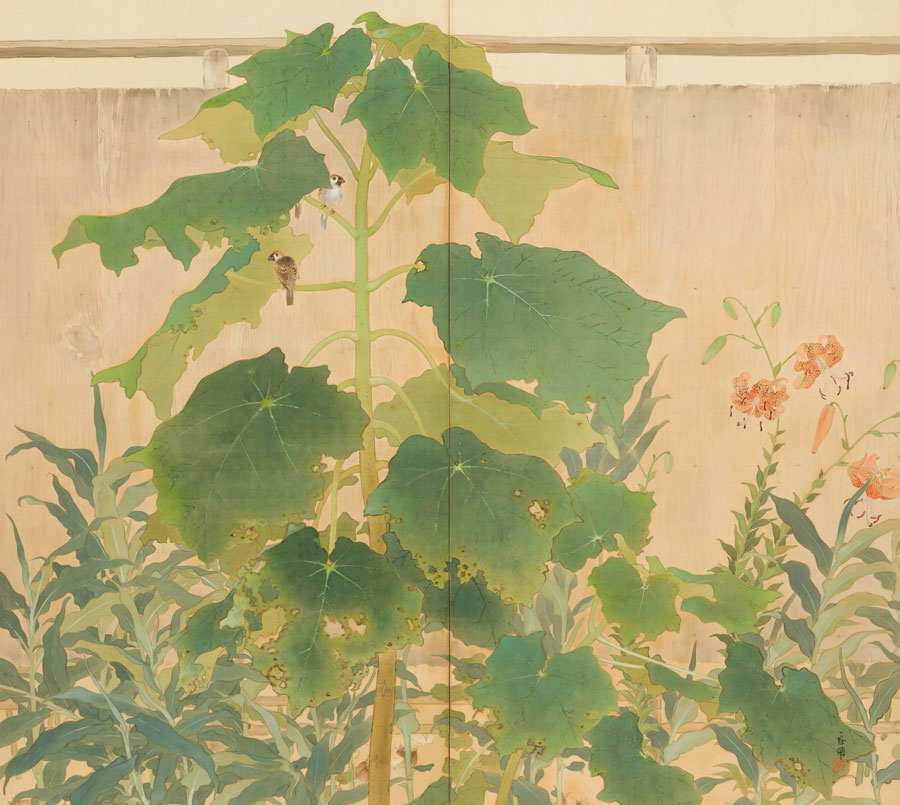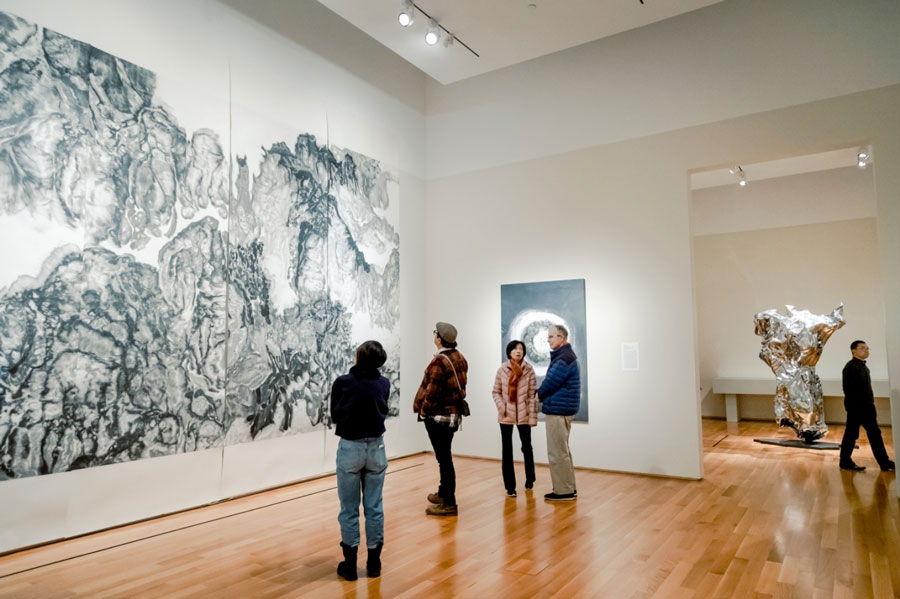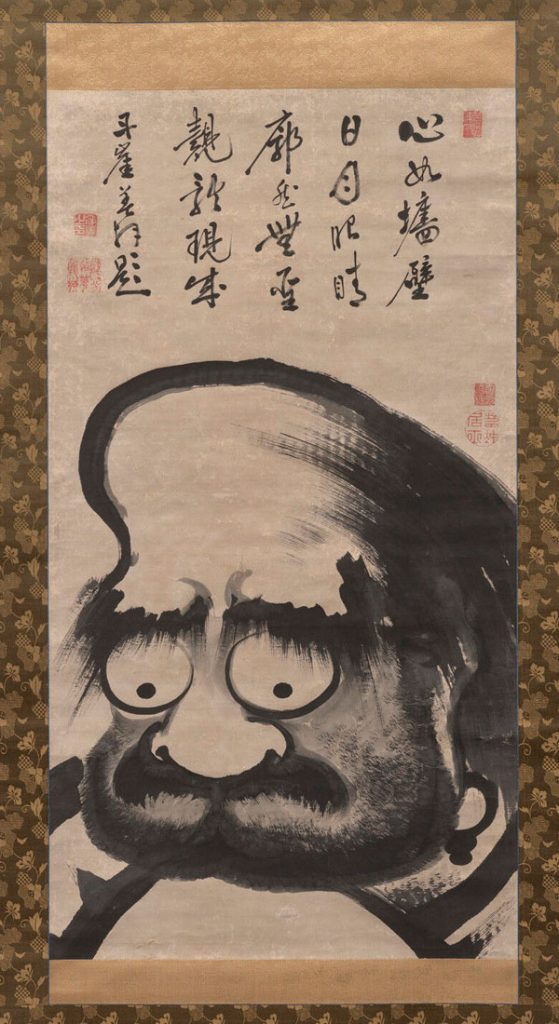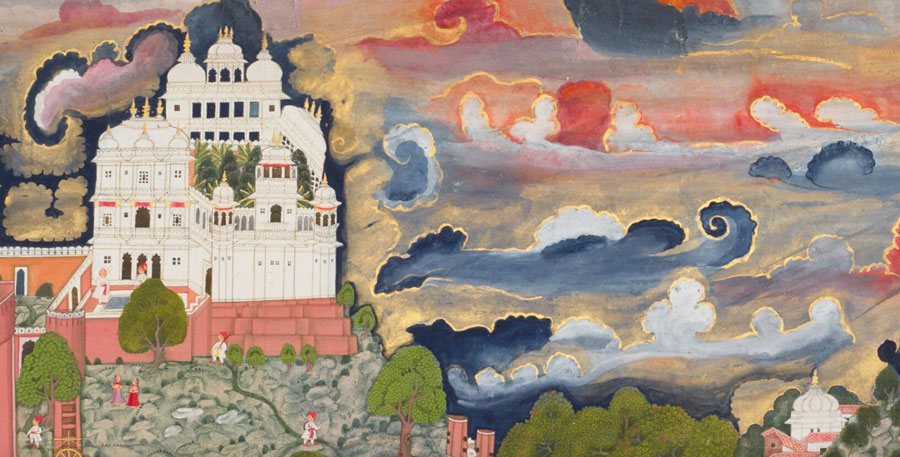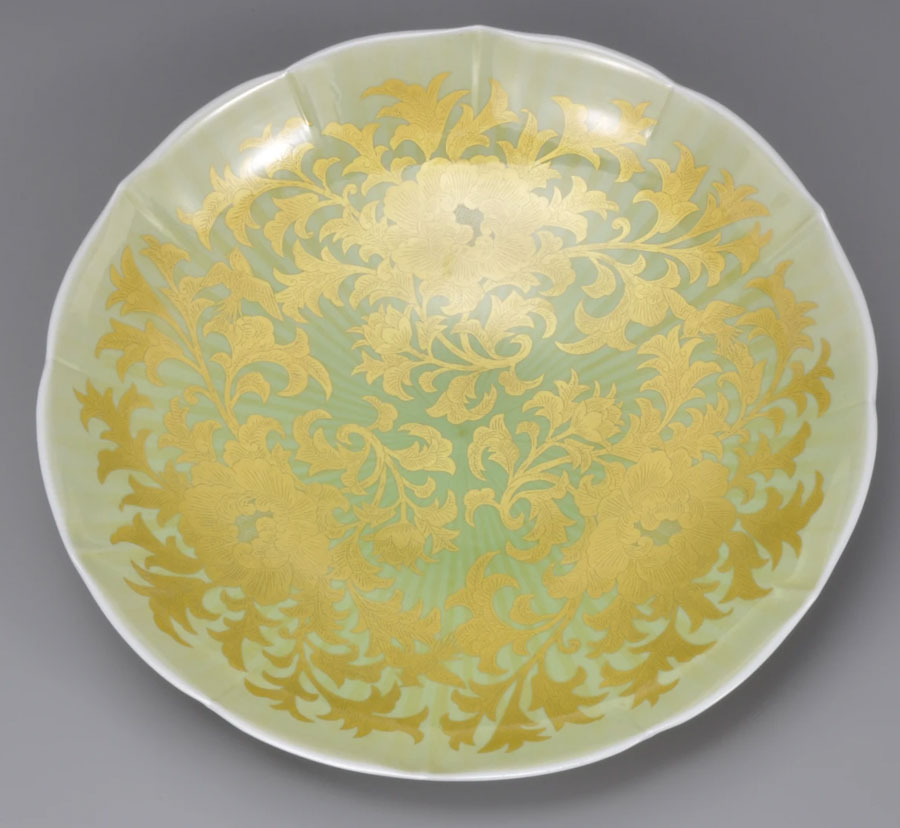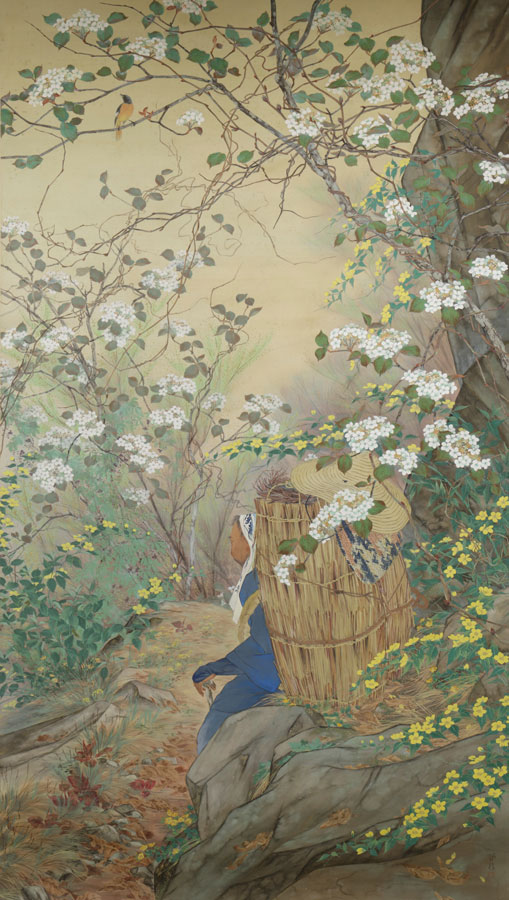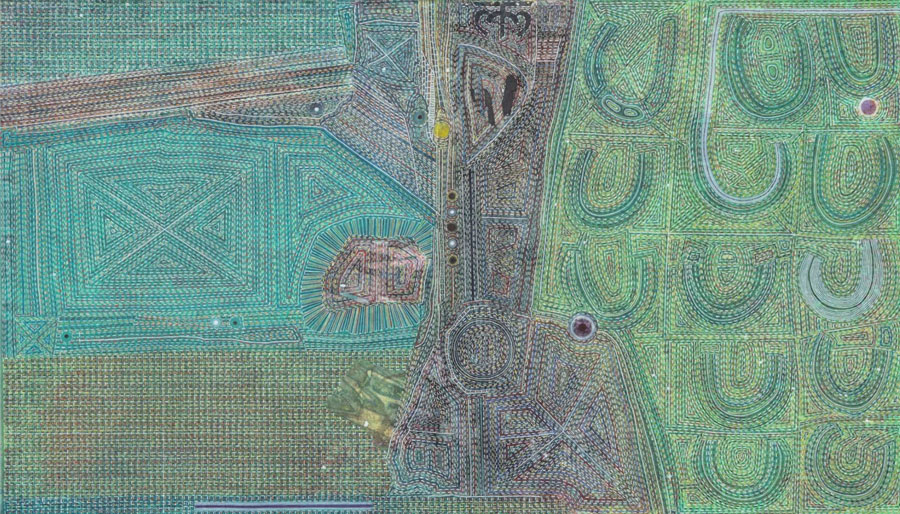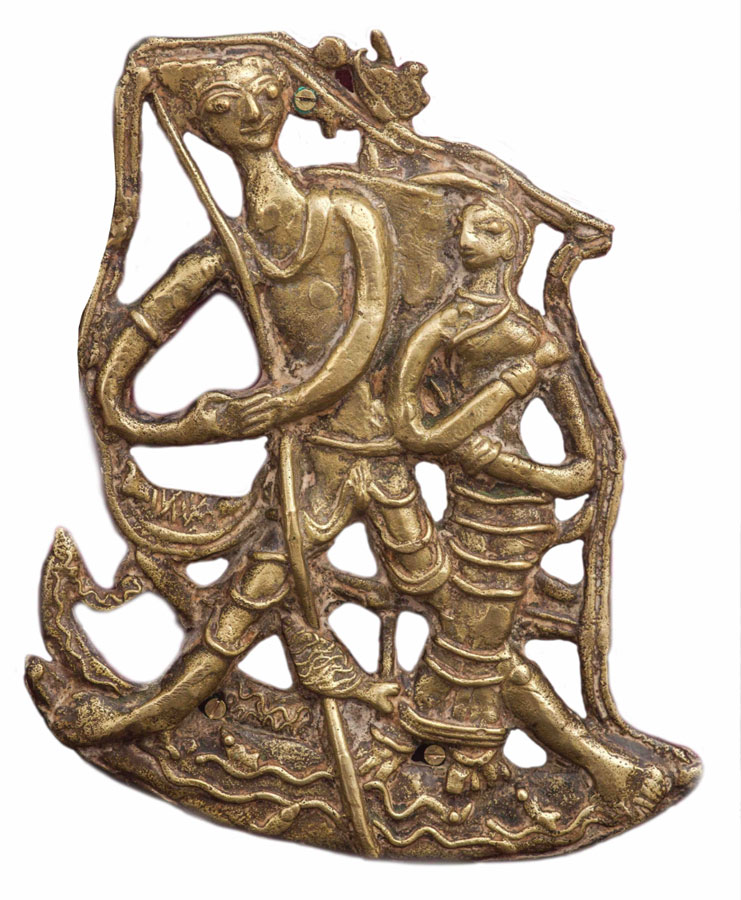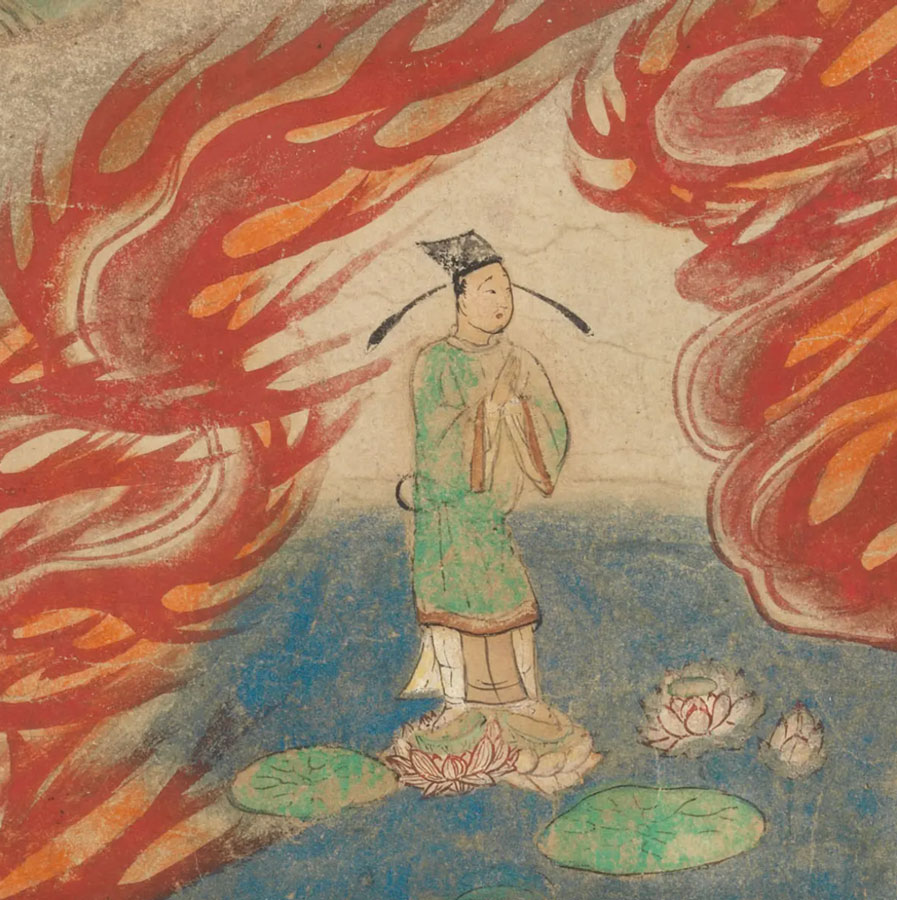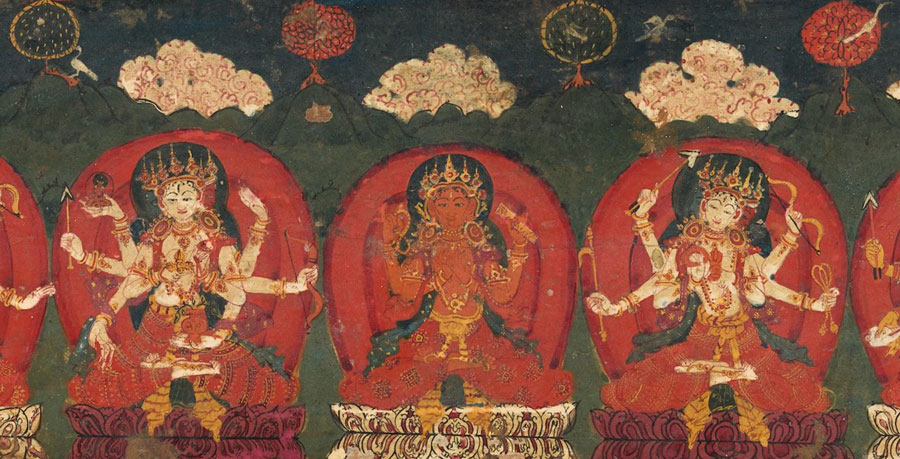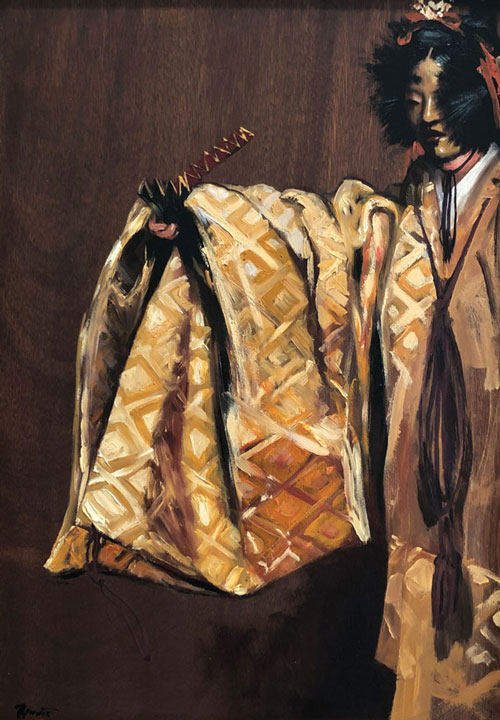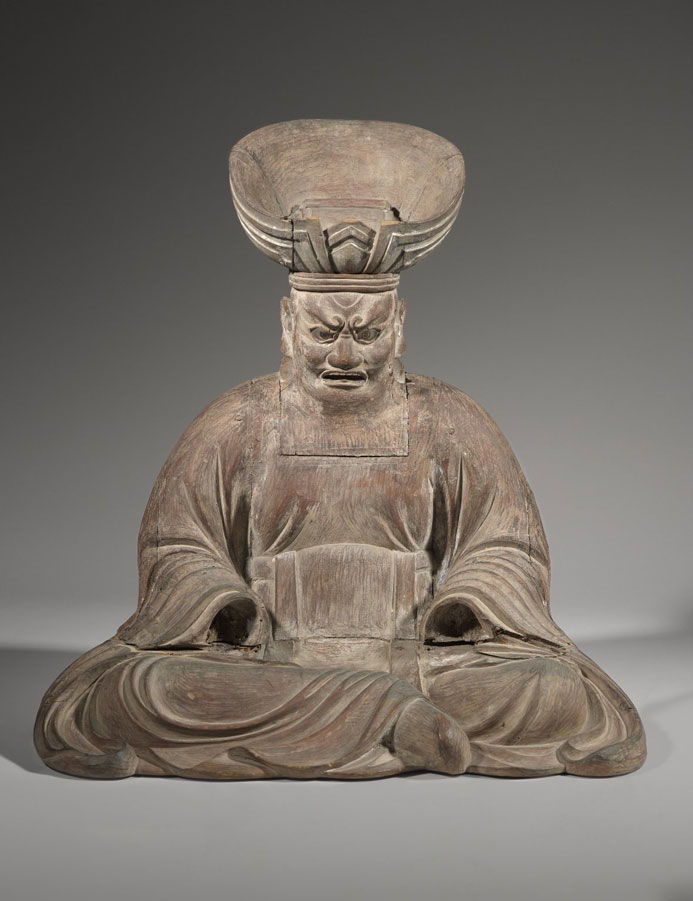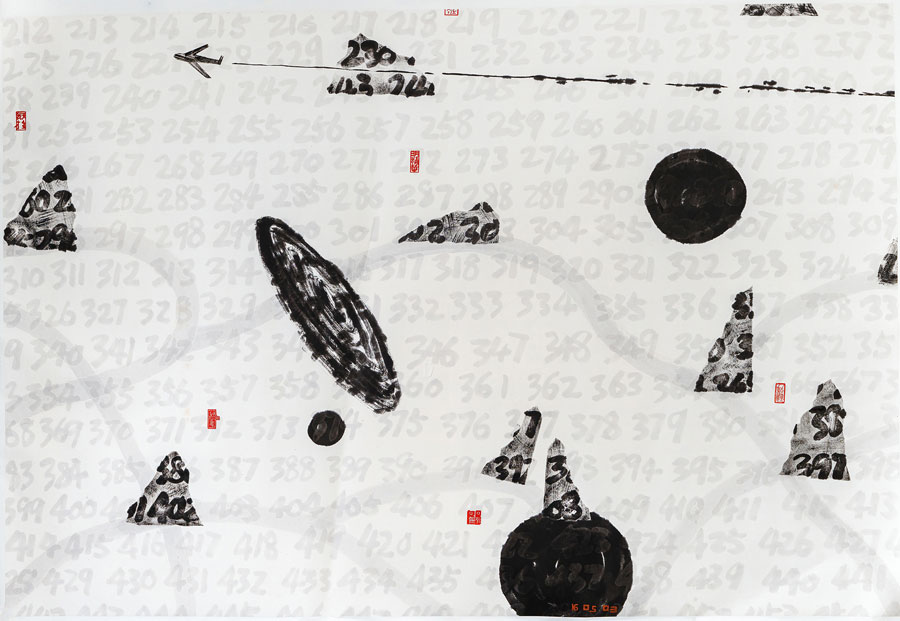
Fung Ming Chip, 160503, 2016, ink on paper, 48 7/8 x 71 5/8 in.
This is the last opportunity to see the exhibition Fung Ming Chip: Traces of Time at Fu Qiumeng Fine Art before it closes on May 20.
The show includes works from the latest series by the artist (b. 1951 in Guangdong and raised in Hong Kong), entitled NumberS. These are juxtaposed with representative examples drawn from his lifelong exploration of the art of calligraphy and the various scripts he has developed during this process.
To better understand Fung Ming Chip's approach, read the following interview conducted over email by the exhibition's curator, Dr. Daniel Greenberg.
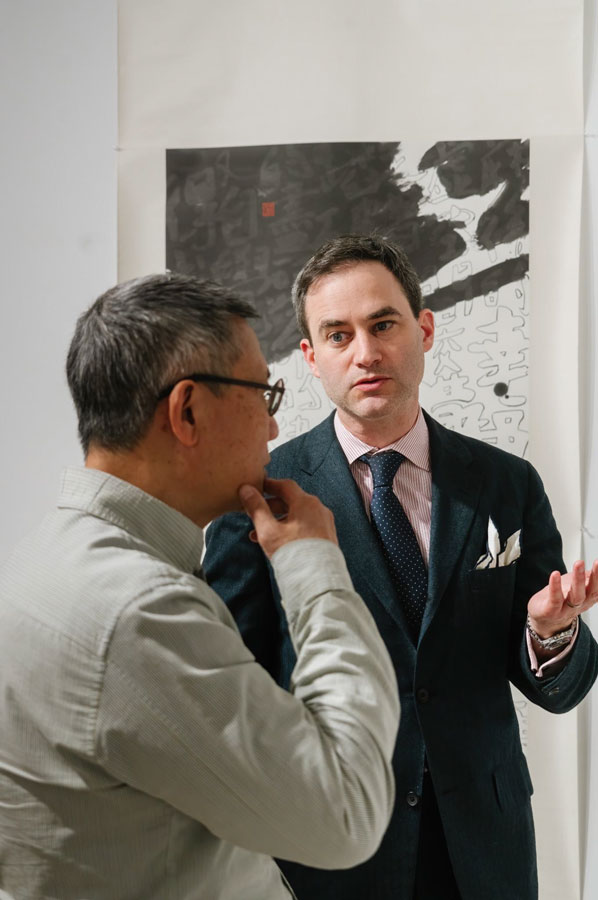
Fung Ming Chip and Curator Dr. Dan M. Greenberg ©The FQM, 2023
Fu Qiumeng Fine Art is currently exhibiting a special presentation of Chinese artist Fung Ming Chip (冯明秋, b. 1951)’s latest series, NumberS, while also showcasing the artist’s unique approach to the medium of shufa (书法, the art of writing) through a selection of works taken from across his long career. Born in Guangdong and raised in Hong Kong, Fung began his artistic career after he moved to New York City in 1977. His first experiments in seal carving (篆刻, zhuanke) deconstructed the forms of Chinese characters in this traditional medium. This engagement with the written word led Fung to a broader study of Chinese characters in the art of shufa. Over the past forty years, Fung has invented over a hundred distinctive “scripts” that employ a wide range of styles and non-traditional processes, each of which explores how shufa works to represent the artist’s practice unfolding in time. Don’t miss your final chance to explore Fung Ming Chip’s conceptual calligraphy in “Traces of Time.” The exhibition will be on view until The exhibition will be on view until Saturday, May 20th.
Building upon conversations between the curator and artist during the installation and opening of this exhibition, the following interview was conducted via email.
Fung Ming Chip: Looking back now, the emergence of number script fifteen years ago was actually a wake-up call for me regarding the temporal nature of Chinese calligraphy. Over the past fifteen years, in my artistic creation pivoting around calligraphy, I occasionally used numbers instead of Chinese characters to eliminate the literary nature of the text, allowing the technique and composition to be manifested. In this way, numbers gradually became an integral part of my calligraphy practice. It wasn't until 2015 that I was certain that calligraphy is an art of time and I began to think about ways to make numbers as demarcations of time, constructing and exploring issues of painting.
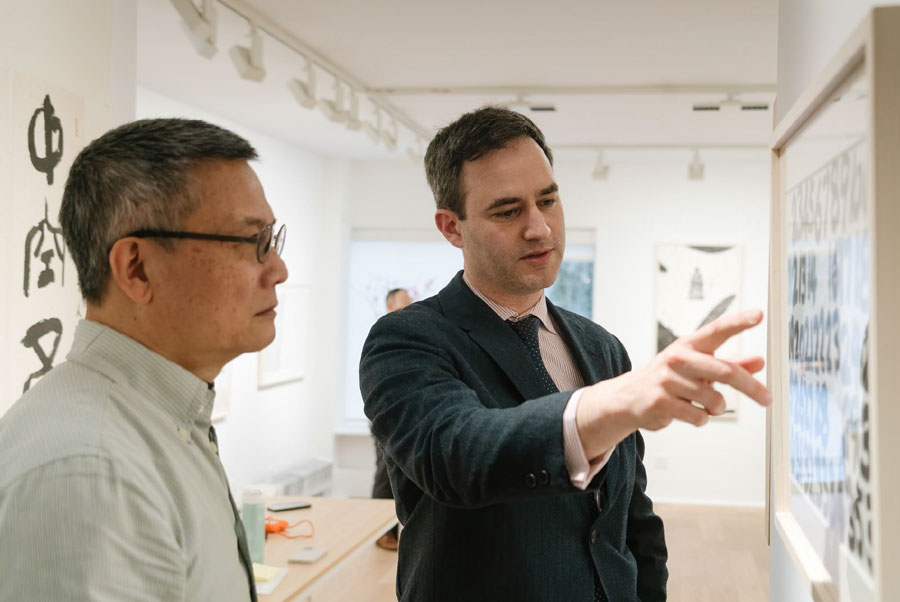
Fung Ming Chip and Curator Dr. Dan M. Greenberg ©The FQM, 2023
Daniel Greenberg: NumberS Series utilizes and combines a wide range of artistic practices that you invented for other “scripts.” Does working with numbers and pictorial representation rather than characters change the meaning or visual characteristic of these processes?
Fung Ming Chip: Definitely! When an artwork contains text in the form of Chinese characters, most people who can read will try to understand its meaning, which can influence how viewers perceive the work and their emotions. Although there is little difference in the creative process and various techniques used between writing numbers and text, the audience's perception of the artwork can be significantly different. Whether or not there is literary significance, the use of numbers can evoke a very different feeling from the audience.
Daniel Greenberg: Numbers Series marks the first time you have used a razor to cut the surface of your works. What does this unique process add to your work both visually and intellectually?
Fung Ming Chip: In my opinion, the excision of the surface did not significantly change the composition of my artwork. Rather, it was simply a conceptual and technical necessity. Although it was my first time experimenting with excision, I knew exactly what the visual outcome would be. The use of excision serves the spatial needs of the artwork.
Daniel Greenberg: What parts of Chinese painting are you attempting to integrate into NumberS Series? What can painting express that shufa cannot?
Fung Ming Chip: My intention in creating the Numbers Series was to demonstrate the differences in how perspectives are perceived in Chinese and Western paintings, which is something that cannot be addressed through calligraphy.
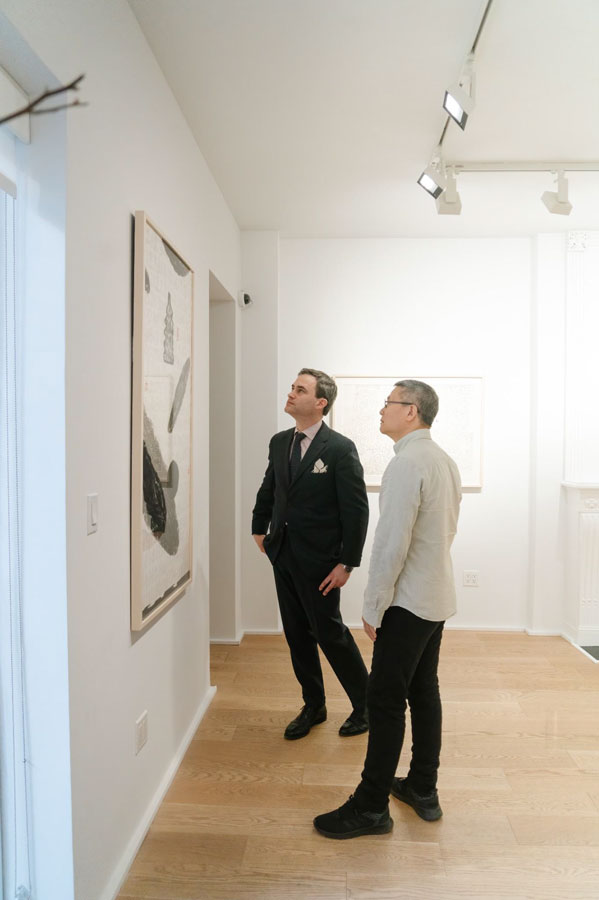
Fung Ming Chip and Curator Dr. Dan M. Greenberg ©The FQM, 2023
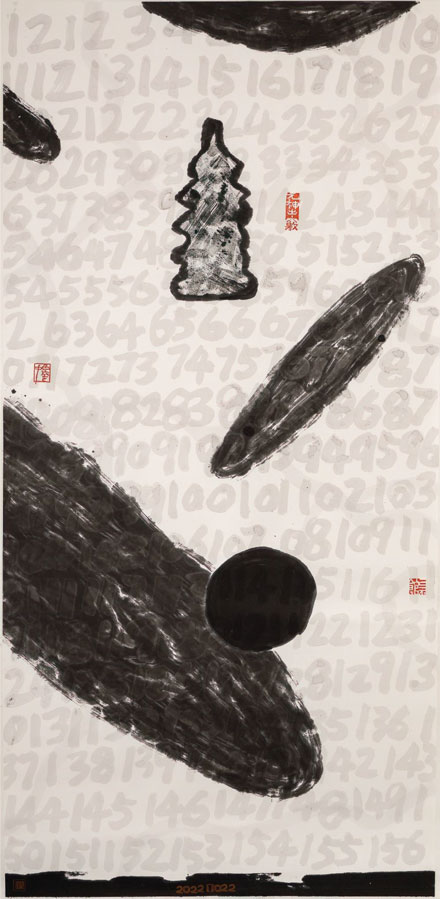
Fung Ming Chip, NumberS: Transparent Script with Pagoda, 数字系列:宝塔透字, 2022, Ink on Paper, 27 1/8 x 56 1/4 in
Daniel Greenberg: In NumberS: Transparent Script with Pagoda, you include a seal with the Daoist phrase 元神出竅 and paint the forms of stupas or pagodas. How do Daoist and Buddhist ideas and imagery relate to your art?
Fung Ming Chip: Buddhism is a foreign religion that has had an influence on Taoism, but ultimately they are two different practices. You won't see Buddhist monks going to mountaintops to absorb the essence of the sun and moon. While I am not a Buddhist or a Taoist, I appreciate the philosophical thinking in Buddhism and the mystical concepts in Taoism. I believe that the two can complement each other, so I don't mind incorporating both into my artwork.
